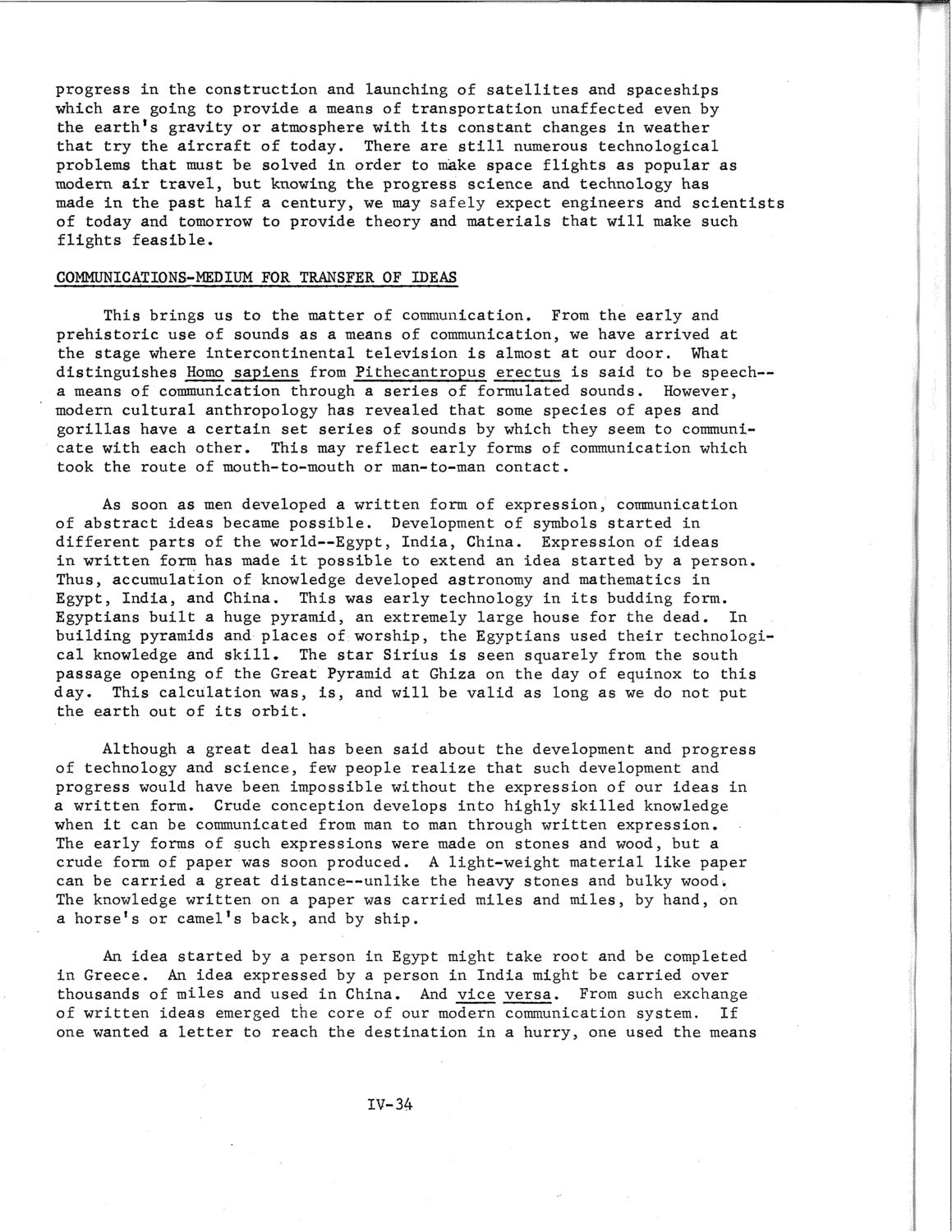| |
| |
Caption: SWE - Proceedings of the First International Conference of Women Engineers and Scientists
This is a reduced-resolution page image for fast online browsing.

EXTRACTED TEXT FROM PAGE:
progress in the construction and launching of satellites and spaceships which are going to provide a means of transportation unaffected even by the earth's gravity or atmosphere with its constant changes in weather that try the aircraft of today. There are still numerous technological problems that must be solved in order to make space flights as popular as modern air travel, but knowing the progress science and technology has made in the past half a century, we may safely expect engineers and scientists of today and tomorrow to provide theory and materials that will make such flights feasible. COMMUNICATIONS-MEDIUM FOR TRANSFER OF IDEAS This brings us to the matter of communication. From the early and prehistoric use of sounds as a means of communication, we have arrived at the stage where intercontinental television is almost at our door. What distinguishes Homo sapiens from Pithecantropus erectus is said to be speech— a means of communication through a series of formulated sounds. However, modern cultural anthropology has revealed that some species of apes and gorillas have a certain set series of sounds by which they seem to communicate with each other. This may reflect early forms of communication which took the route of mouth-to-mouth or man-to-man contact. As soon as men developed a written form of expression, communication of abstract ideas became possible. Development of symbols started in different parts of the world—Egypt, India, China. Expression of ideas in written form has made it possible to extend an idea started by a person. Thus, accumulation of knowledge developed astronomy and mathematics in Egypt, India, and China. This was early technology in its budding form. Egyptians built a huge pyramid, an extremely large house for the dead. In building pyramids and places of worship, the Egyptians used their technological knowledge and skill. The star Sirius is seen squarely from the south passage opening of the Great Pyramid at Ghiza on the day of equinox to this day. This calculation was, is, and will be valid as long as we do not put the earth out of its orbit. Although a great deal has been said about the development and progress of technology and science, few people realize that such development and progress would have been impossible without the expression of our ideas in a written form. Crude conception develops into highly skilled knowledge when it can be communicated from man to man through written expression. The early forms of such expressions were made on stones and wood, but a crude form of paper was soon produced. A light-weight material like paper can be carried a great distance—unlike the heavy stones and bulky wood. The knowledge written on a paper was carried miles and miles, by hand, on a horse's or camel's back, and by ship. An idea started by a person in Egypt might take root and be completed in Greece. An idea expressed by a person in India might be carried over thousands of miles and used in China. And vice versa. From such exchange of written ideas emerged the core of our modern communication system. If one wanted a letter to reach the destination in a hurry, one used the means IV- 34
| |